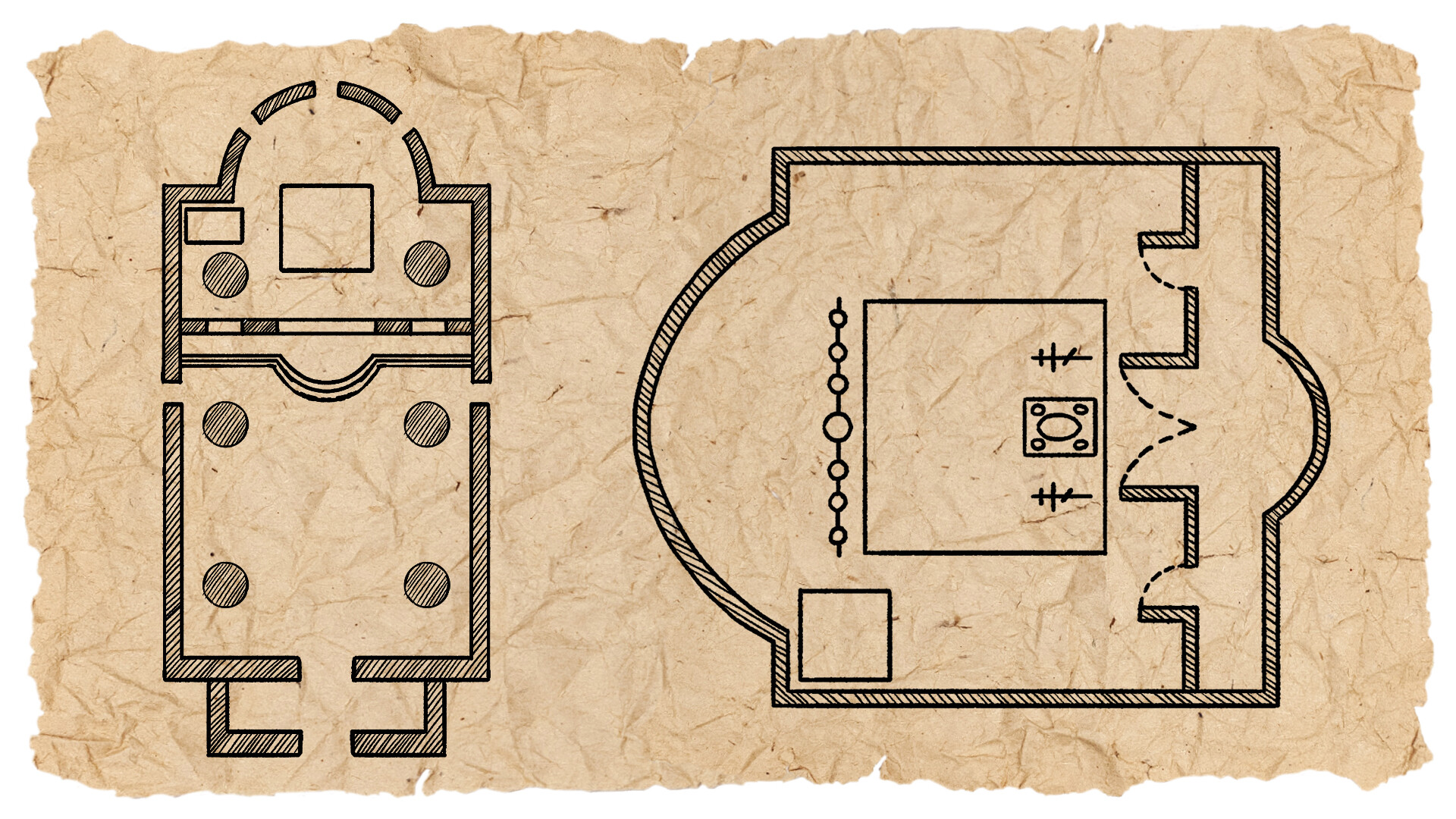
We already explained the architectural elements of Russian churches. Now let's look inside and get an idea of what’s to be found here and what it all means.
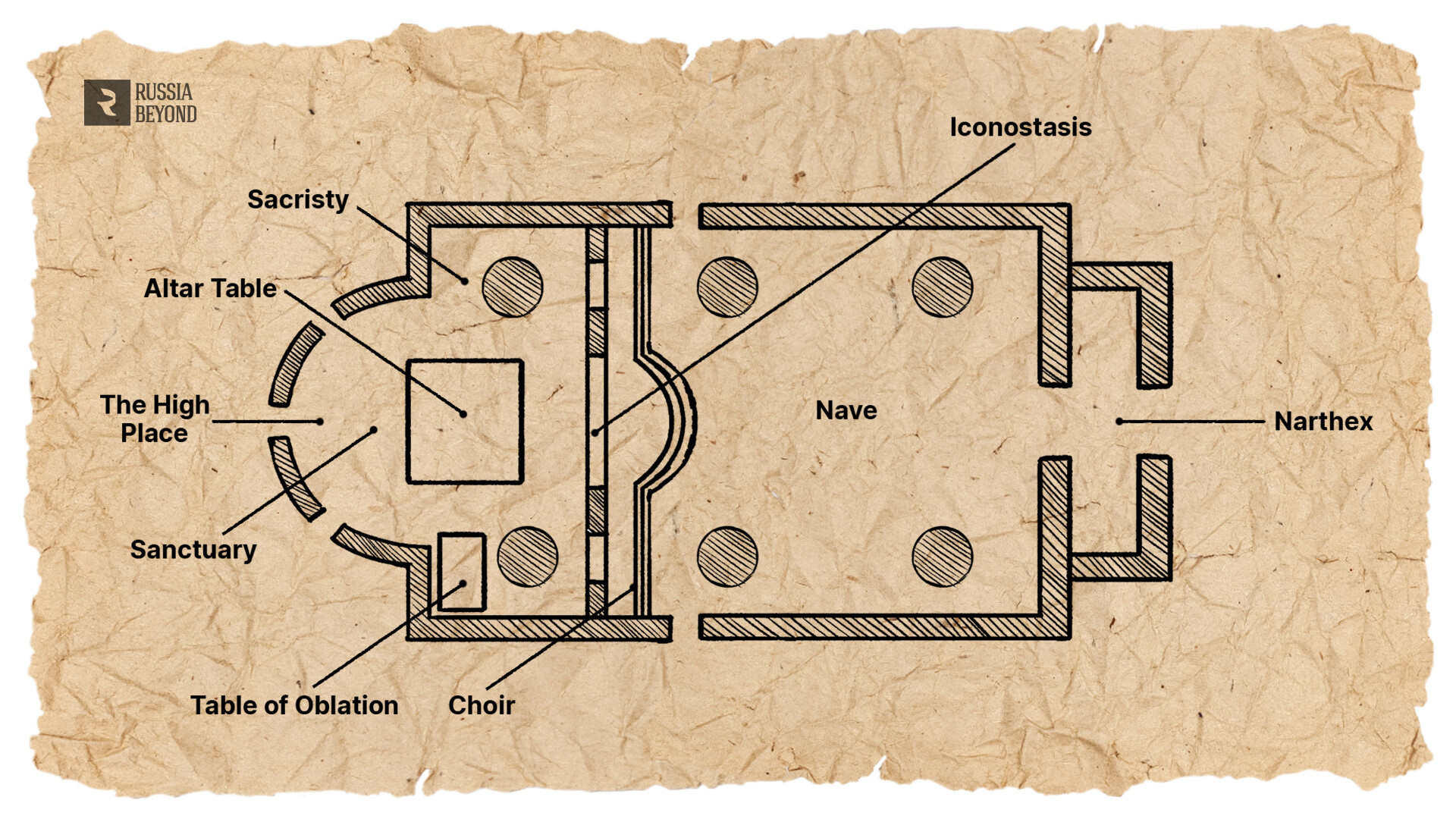
When we enter a church we usually go through the narthex, a sort of vestibule where information about the church and the times of divine services are displayed. Also, you will find headscarves and skirts hanging here for the use of female visitors. In an Orthodox church women should wear a skirt and cover their head, while men, conversely, should take off any headgear.
The narthex also has a historical meaning - in Orthodox churches in the past it was where penitent sinners barred from entering the church had to stand. Nowadays, a church shop can be found in the narthex or just upon entering the main body of the church. Here you can buy candles and small icons and crosses, as well as Orthodox Christian literature.
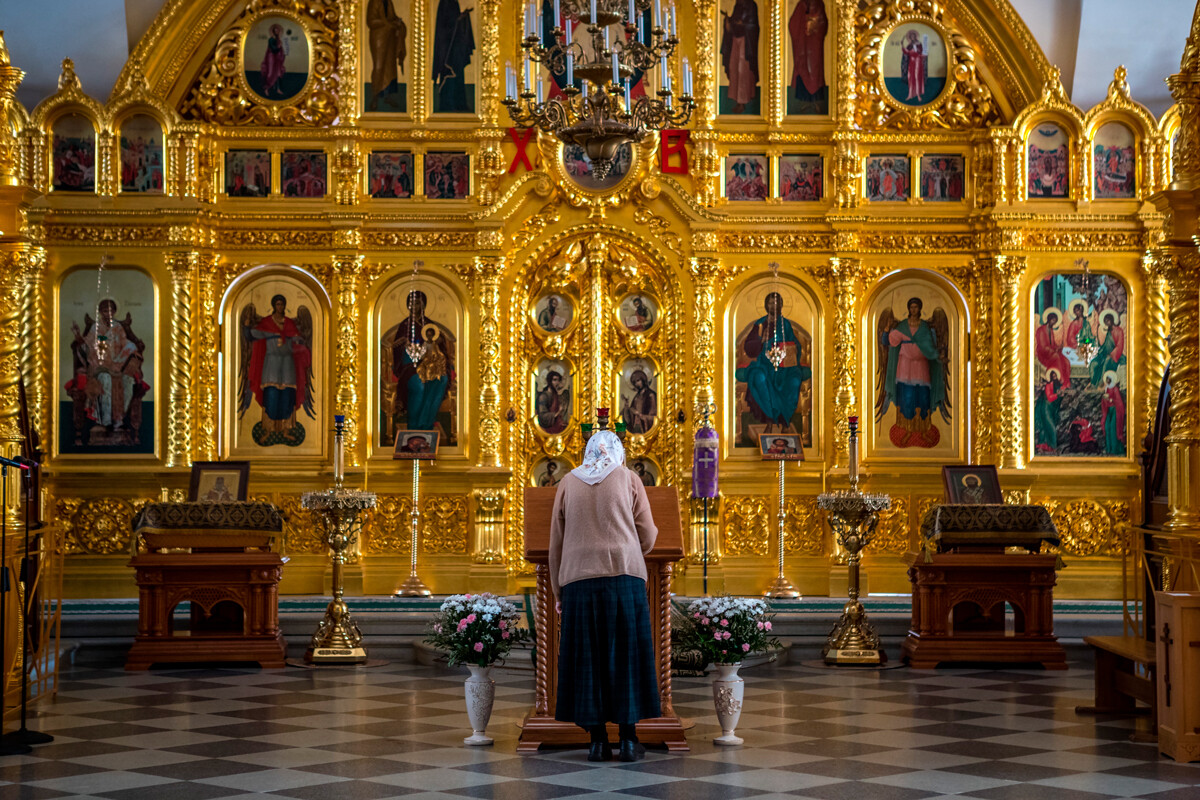
The Life-Giving Trinity Cathedral in Solovetsky Monastery
Ilya Timin/SputnikThe main body of a church is the nave. In a large church, it’s likely to be divided up by columns into several naves or "aisles". Frescoes depicting biblical scenes can be seen on the walls, and an image of the Almighty is frequently represented on the dome.
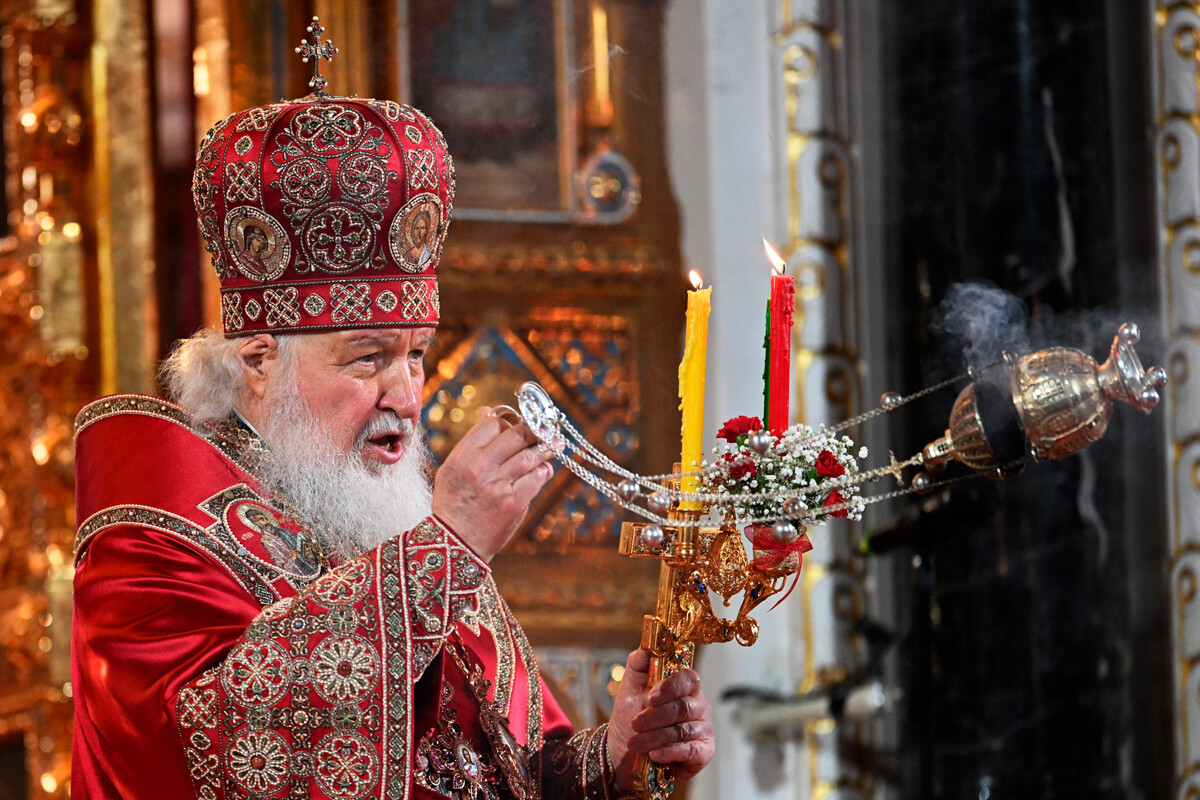
Patriarch Kirill on service in the Christ the Savior Cathedral in Moscow
Pavel Bednyakov/SputnikAs soon as you enter a church you’ll undoubtedly become aware of a particular aroma. It is the smell of incense - a special aromatic resin. It is lit during services with charcoal in a thurible - a metal vessel with a lid, suspended on chains. The priest goes round the whole church with the thurible, spreading the aromatic incense.
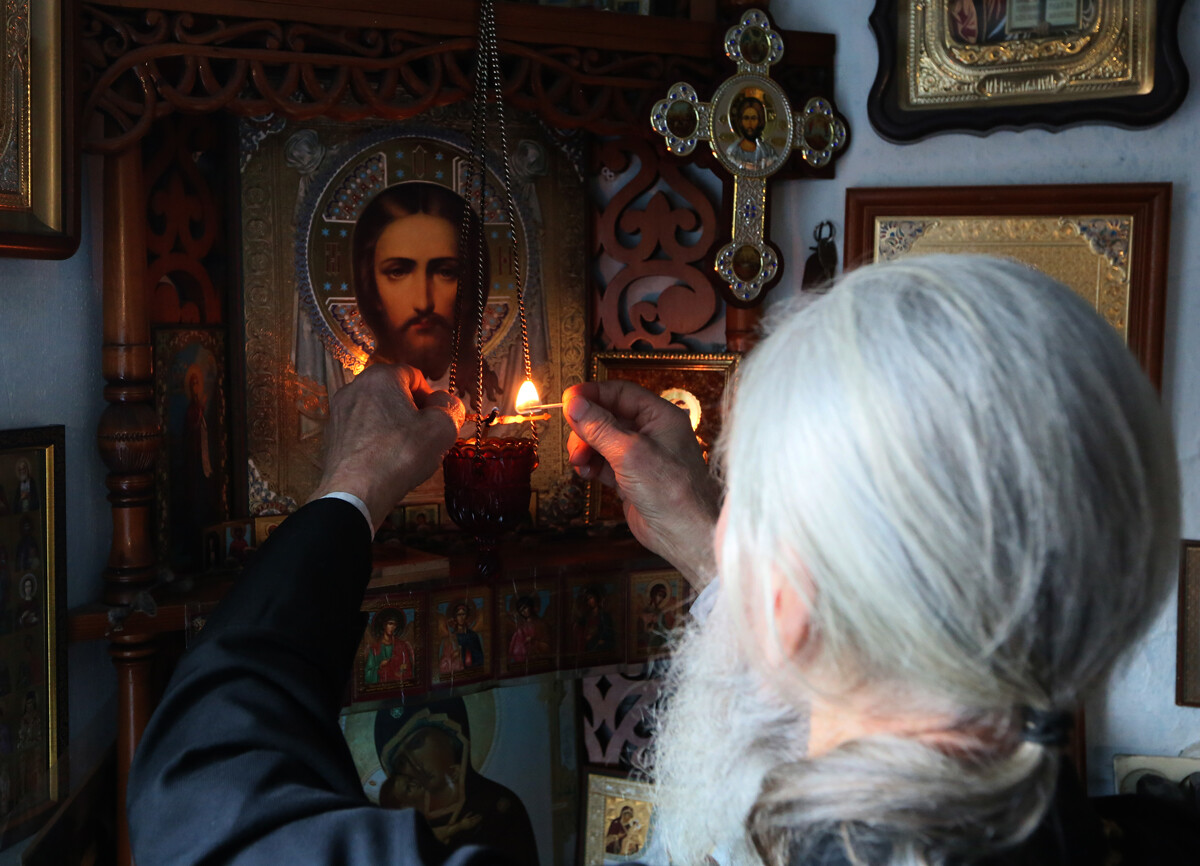
A priest lights the lamps on the iconostasis in a rural church in Krasnoyarsk region
Ilya Naimushin/SputnikThese can be dedicated to various saints, holy days, Biblical scenes, the Mother of God or Jesus Christ. A lamp suspended on chains holding a small candle usually hangs directly in front of an icon.
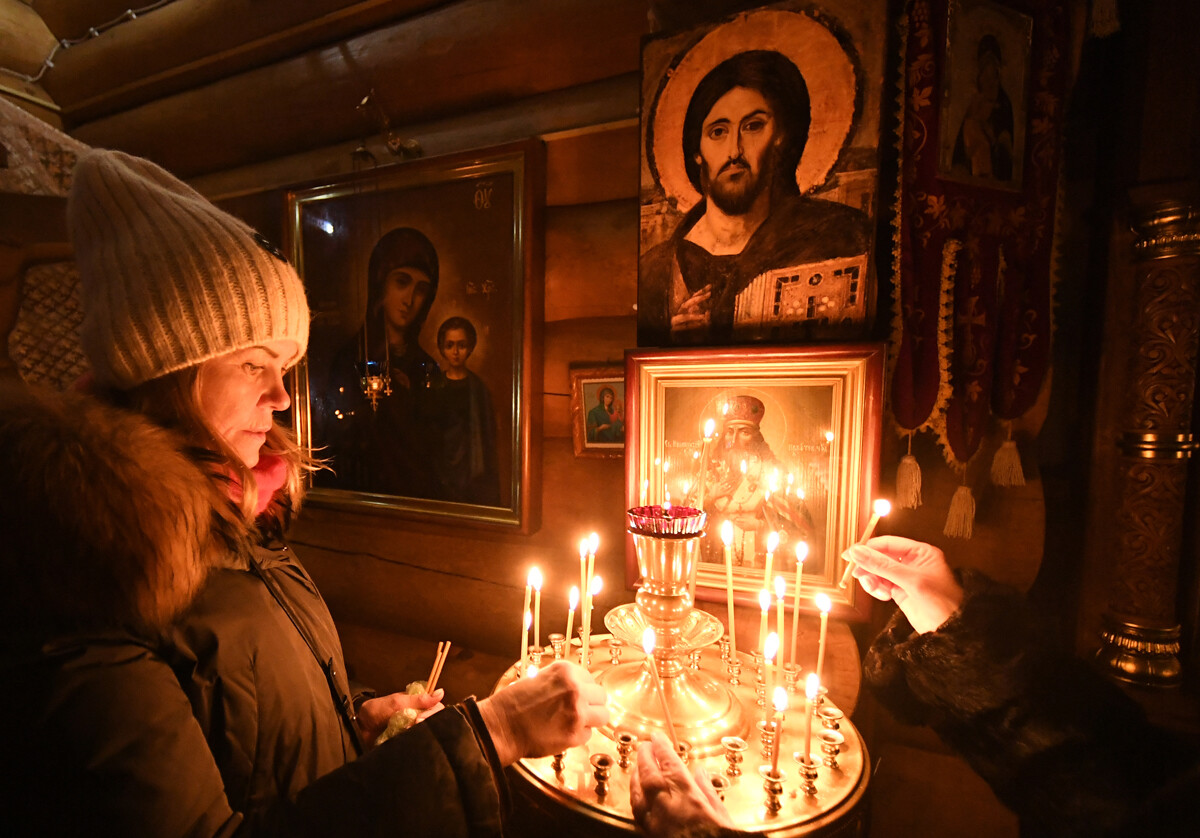
The Christmas night service at the Znamensky Church in Divnogorsk
Ilya Naimushin/SputnikA large candle holder stands on the floor in front of all the icons. Believers place candles here as an accompaniment to their prayers. They frequently pray for the health and well-being of relatives.

The tradition of placing candles in front of icons is a fairly ancient one: In early Christian places of worship inside the catacombs there was simply no other way of seeing the face of a saint. Today the purchase of a candle is a way of making a small offering to the church.
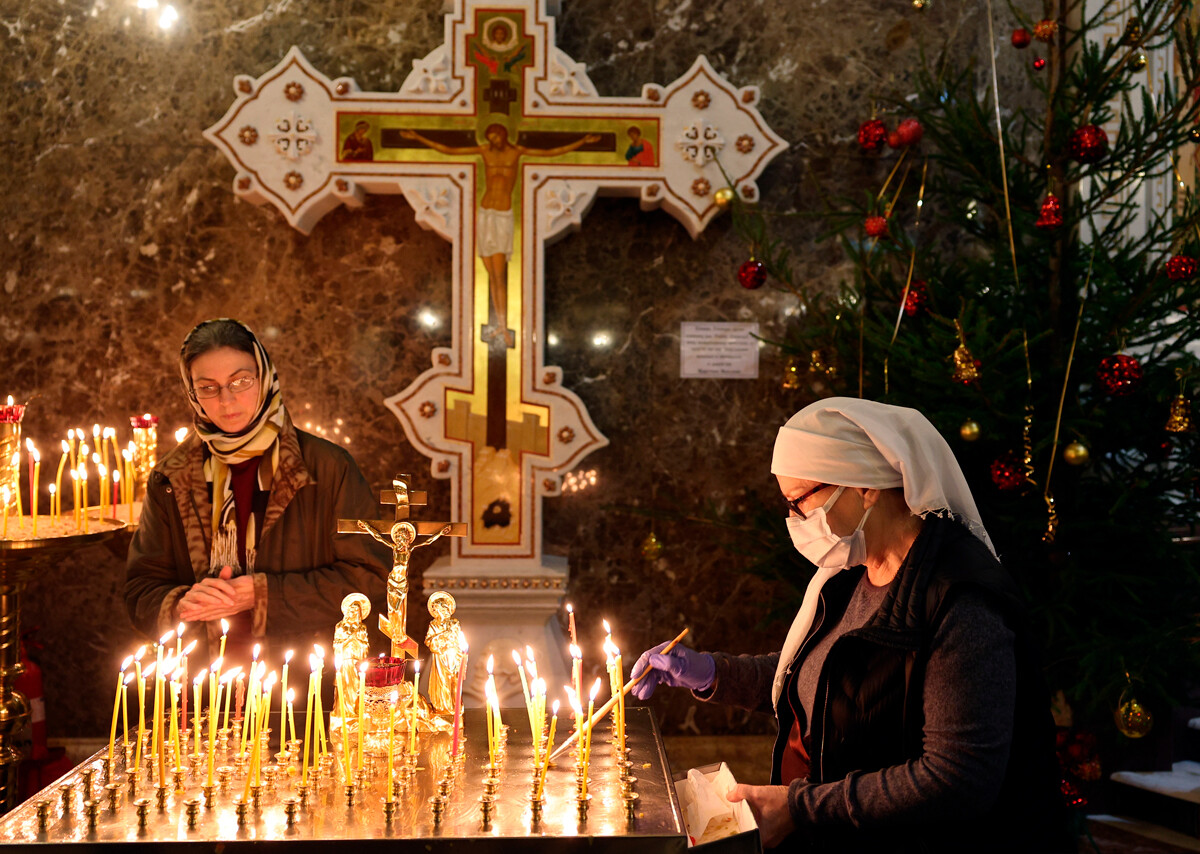
'Kanun' at the Christ the Savior Cathedral in Kaliningrad
Vitaly Nevar/SputnikIn every church you’ll also find a small four-cornered table with candles. It usually stands in front of an image of the Crucifixion and symbolizes Golgotha. Believers place candles here and pray for the repose of their dearly departed.
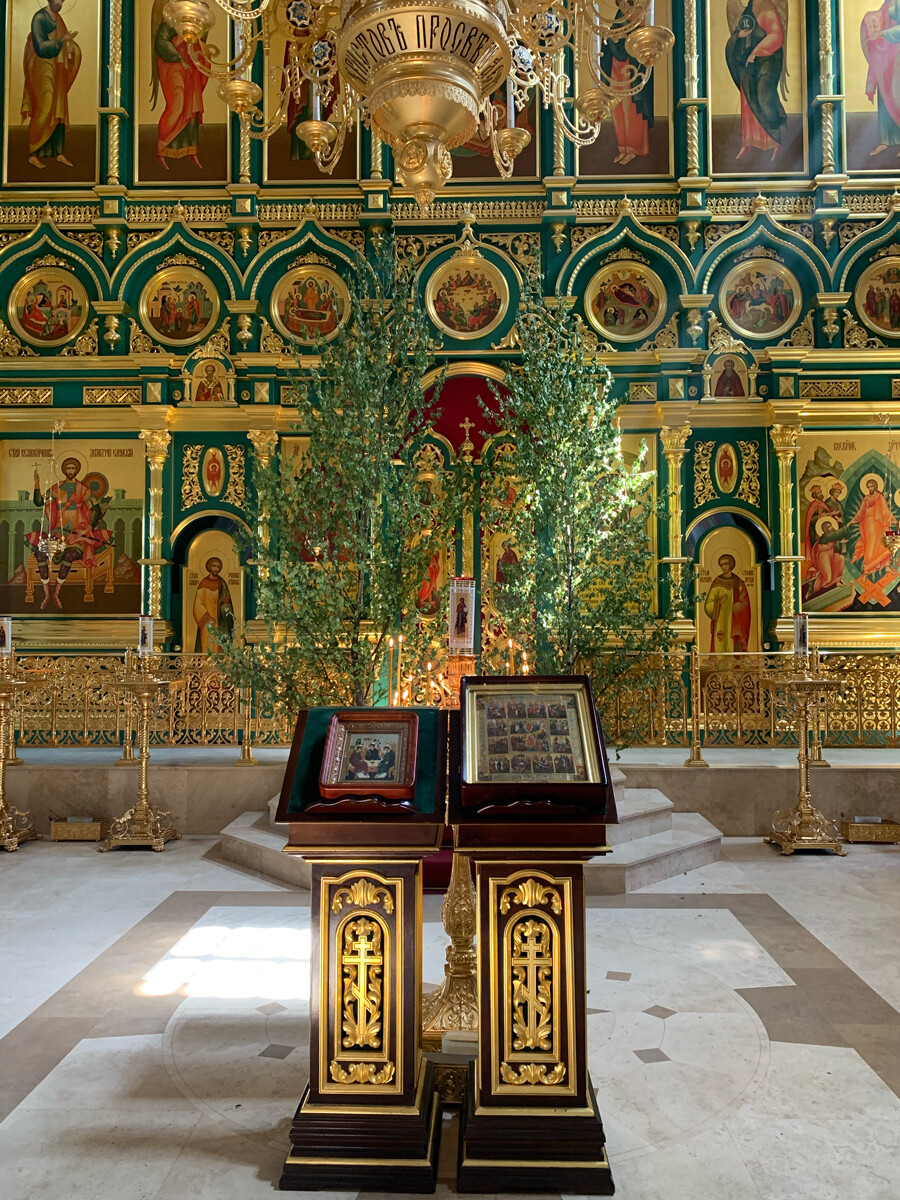
Resurrection Church in Plyos, Ivanovo Region
Alexandra GuzevaA special stand with an icon can be found in the center of the church in front of the iconostasis. The icons here are changed regularly, and are usually dedicated to current feast days.

Choir at the Holy Trinity Cathedral in Yekaterinburg
Pavel Lisitsyn/SputnikThis is a raised area (frequently to the sides of the iconostasis) where singers stand during services. There can be two kliros at the sides.

Iconostasis of the Church of the Elevation of the Cross in Palekh
Alexandra GuzevaThe church’s most prominent and beautiful part is the wall, which is entirely given over to icons that serve as the partition between the nave of the church and the altar area. An iconostasis can have between one and eight rows of icons (the highest iconostases are a common feature of Baroque churches of the 17th-18th centuries). A standard church iconostasis will have around four rows.
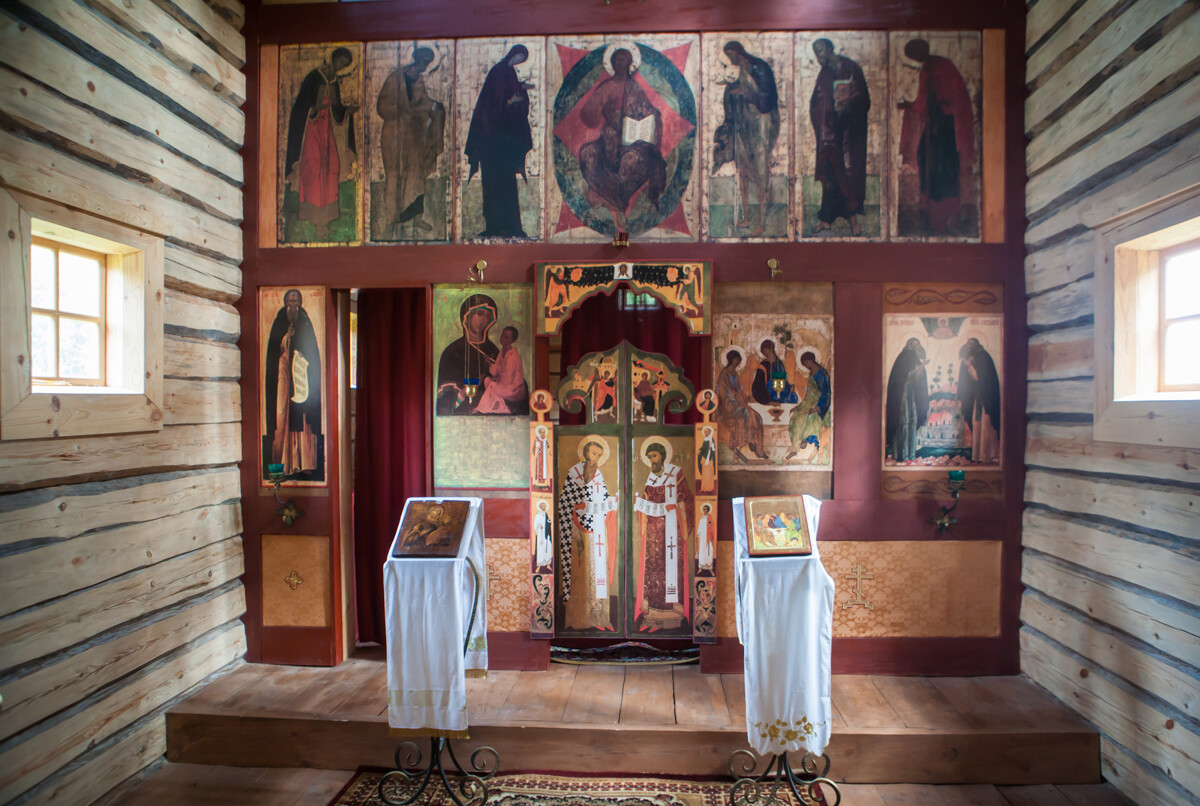
The iconostasis of the Yurievogorsk Monastery
Igor Podgorny/SputnikThere can actually be several iconostases in a church. But don't worry. These smaller ones are in the side chapels; in other words, in separate bays within the main area, and they’re dedicated to different feast days or saints. As a rule, they’re smaller and located at the sides or in annexes. A church can have a number of chapels - for instance, St. Basil's Cathedral has 11! Each chapel has its own dome. See our article on the exterior features of a Russian Orthodox church.
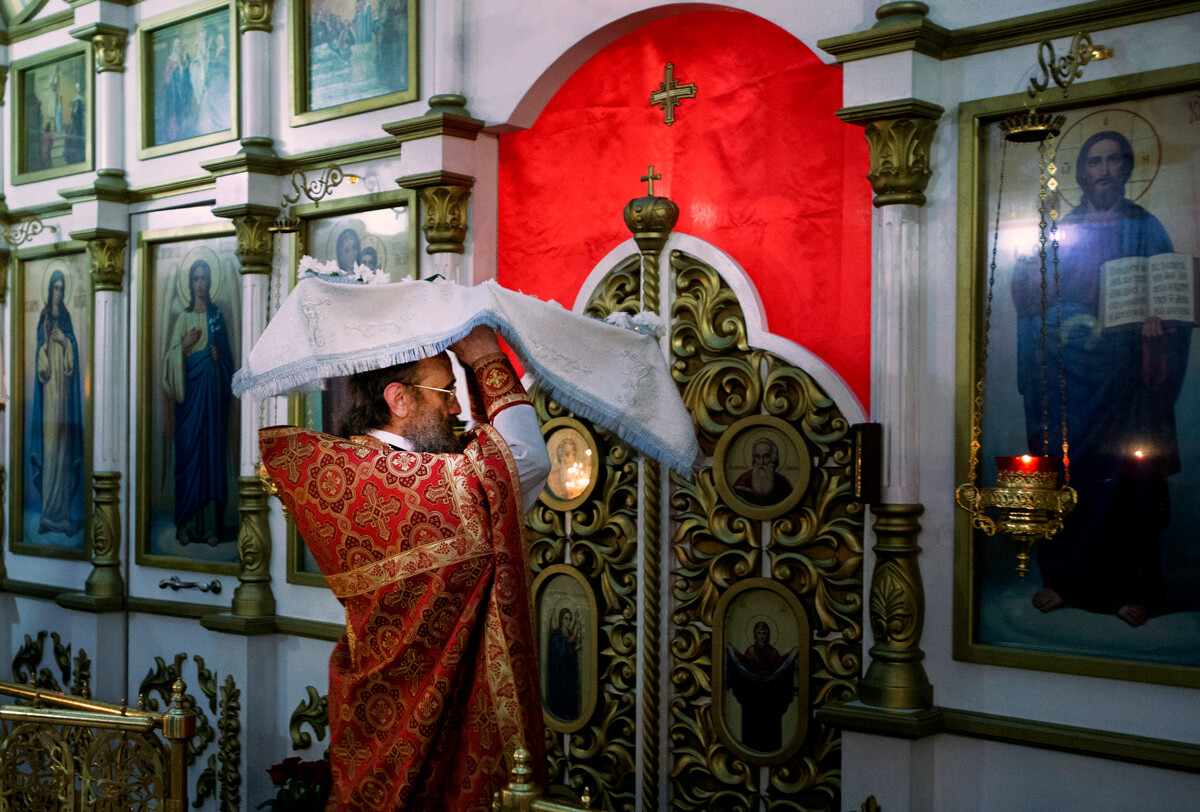
Easter service at the Church of St. Demetrius of Rostov, the miracle worker Metropolitan of Rostov in the village of Dmitriyevskoye, Tula region
Vitaly Belousov/SputnikThe central doors of the iconostasis are only opened during services. They lead to the altar table (more on this later). Only the priests can enter here.
Two more doors are at the sides of the iconostasis - for the use of church deacons who assist the priest during services, and one of the doors can also lead to the sacristy where the ritual vestments are kept.
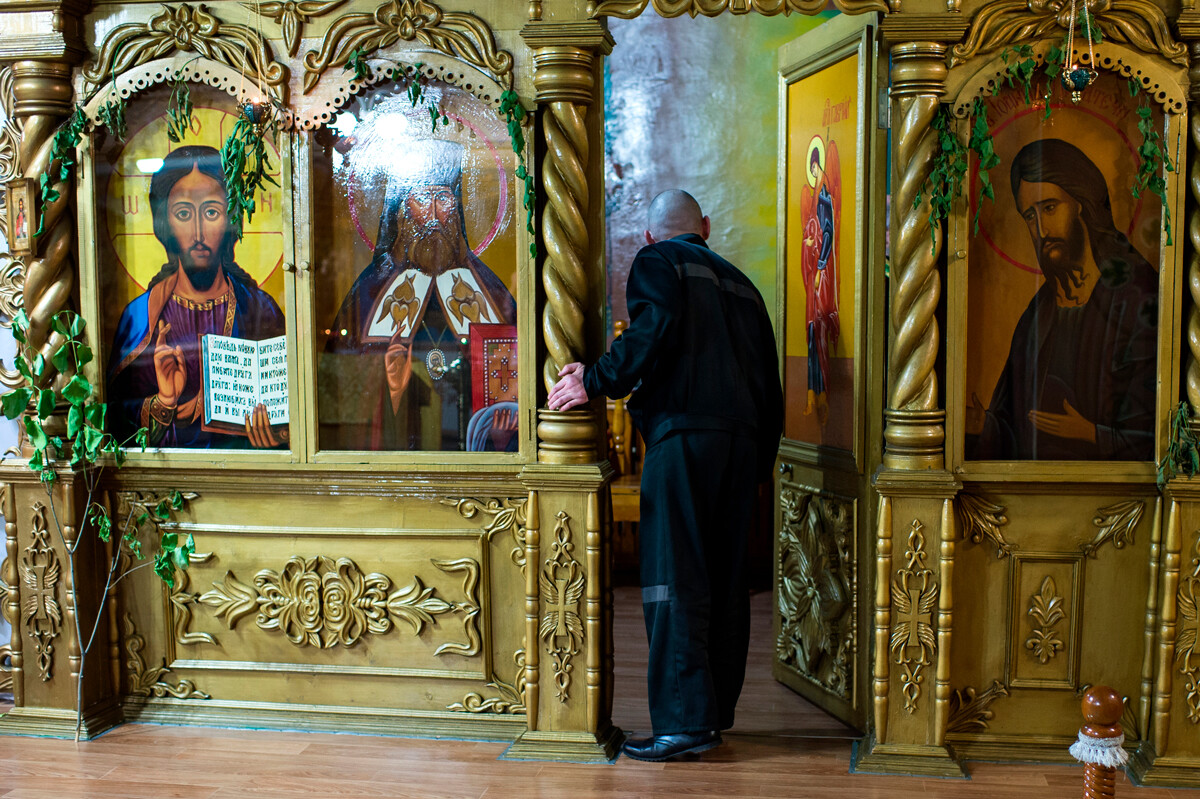
The Altar's South Door in the Omsk prison church
Alexey Malgavko/Sputnik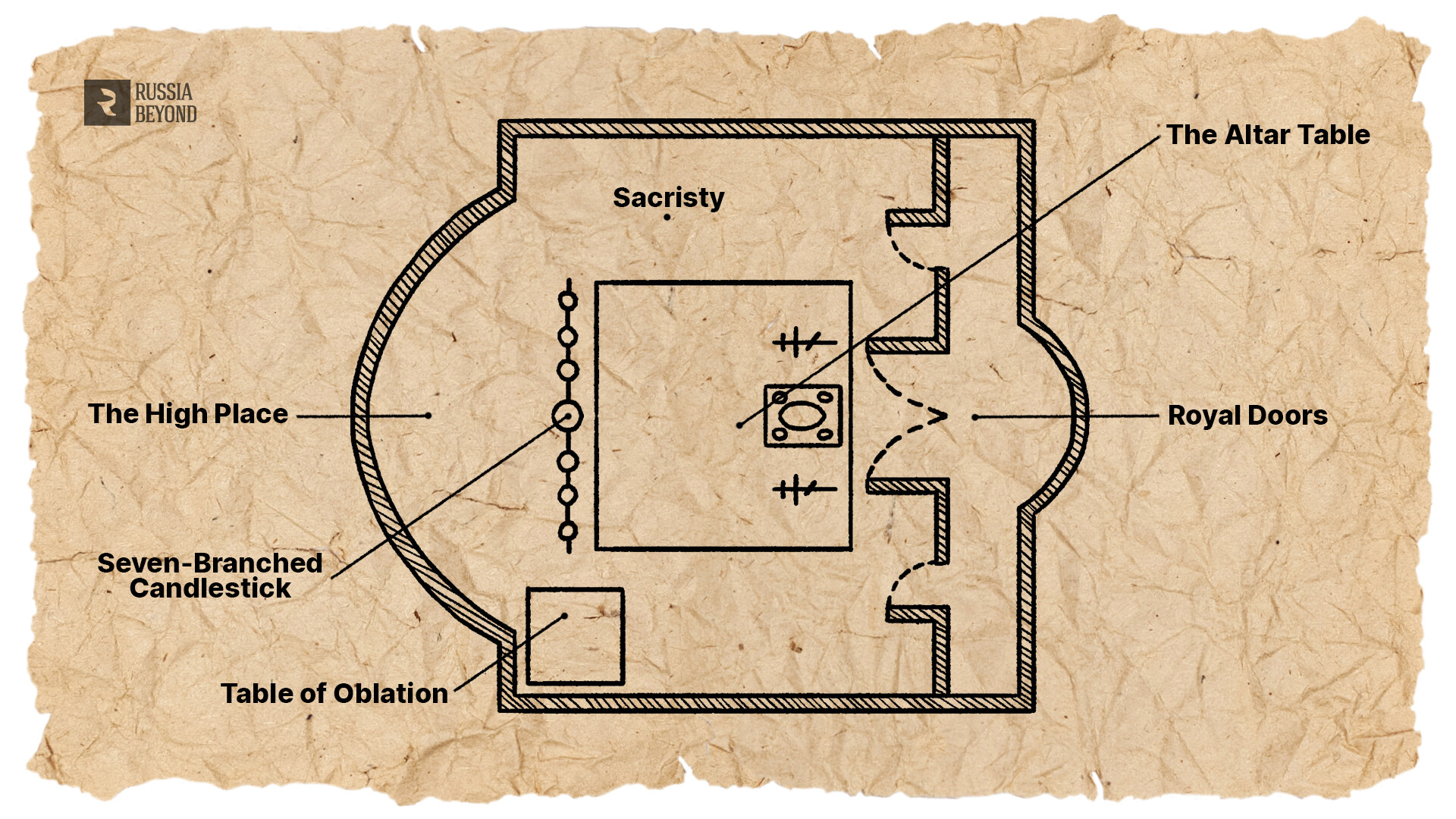
The most important part of a divine service takes place in the church sanctuary, which is a raised area behind the iconostasis where the altar table is placed. The word "altar" itself is derived from Latin "altus" - high. Entry is prohibited to all but the clergy and members of the laity who have the latter's blessing (women can only enter the sanctuary if they have taken holy vows and have the special blessing of a priest).
An altar is literally a place of sacrifice, and in the Christian tradition what is offered up is the Bloodless Sacrifice.
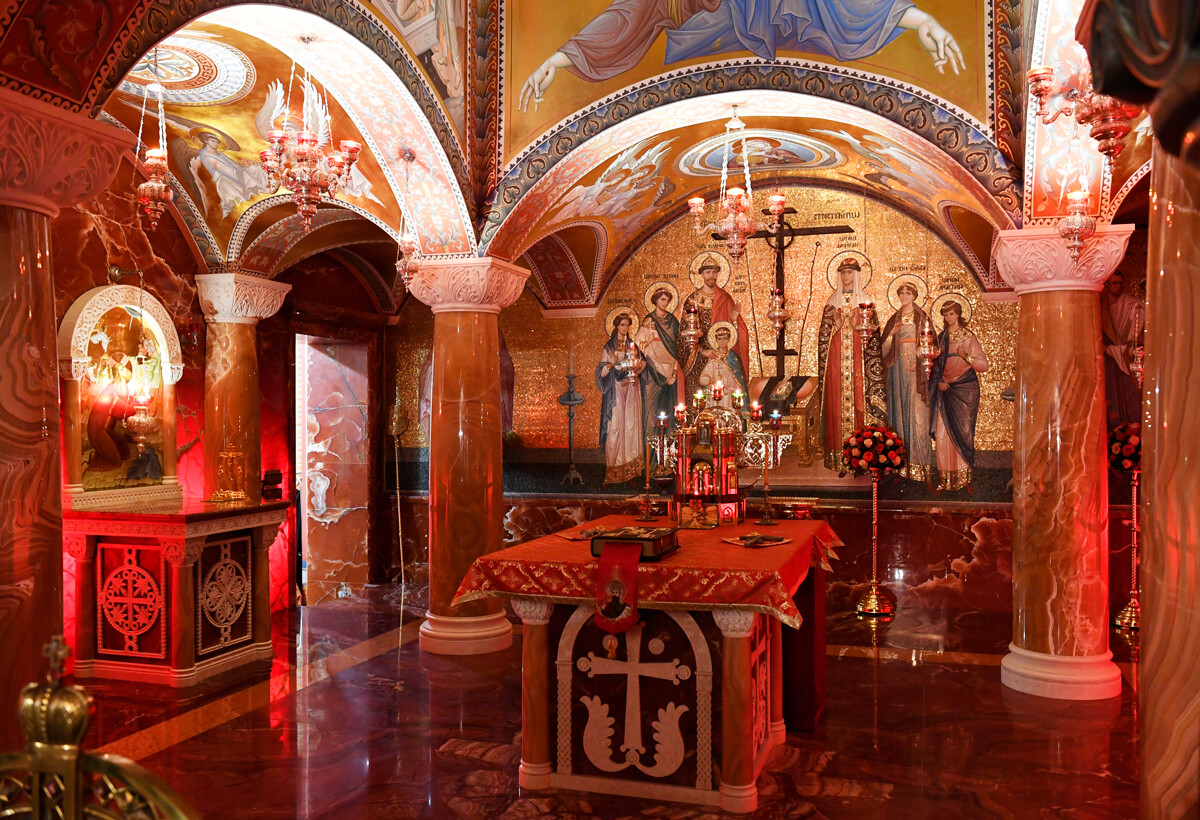
The Altar at the Church of All Saints in Yekaterinburg
Sergei Pyatakov/SputnikIn the center of the sanctuary beyond the Royal Doors is the altar table - it can only be glimpsed from a distance when the gates are opened during services. In appearance, the altar table is a meter-high square table covered with two cloths - the lower one symbolizes the shroud of Christ, and the upper one the ceremonial vestments of Our Lord.
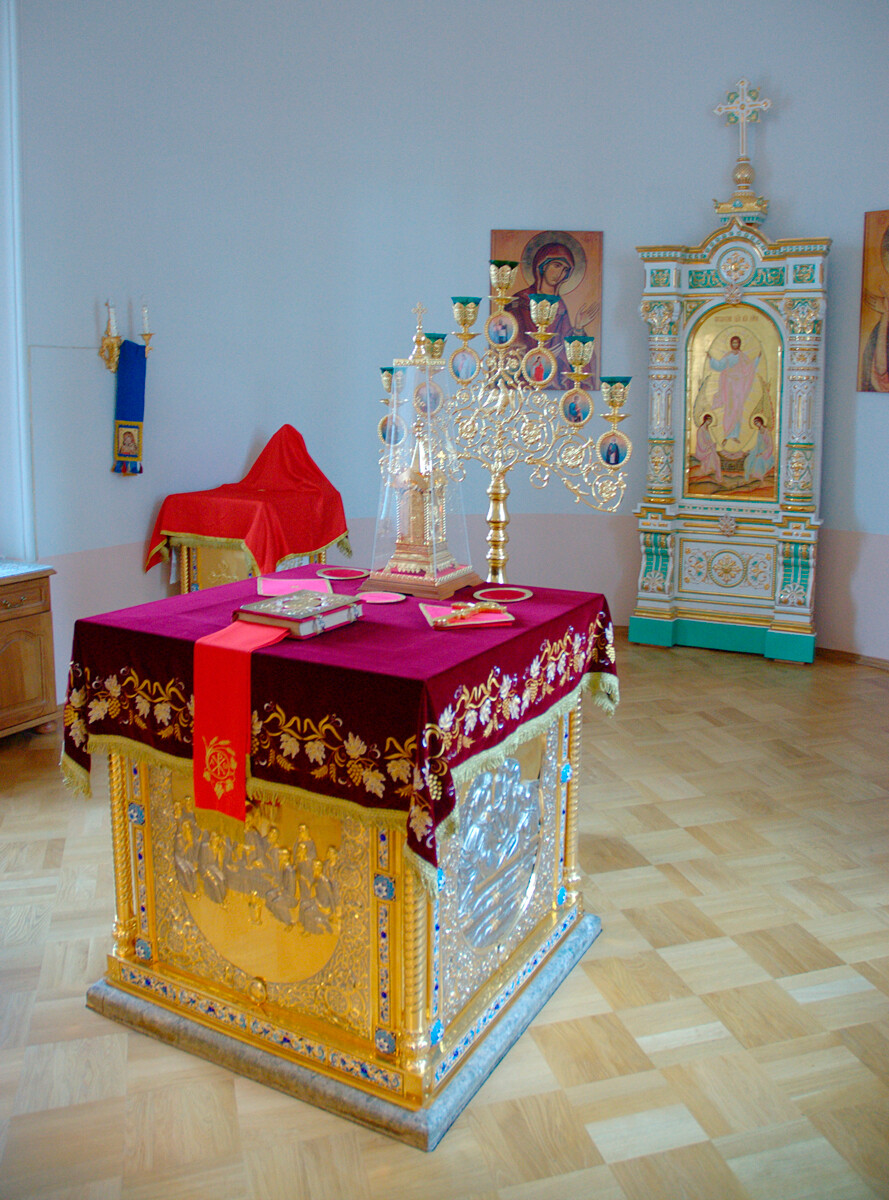
The Altar Table
Priest Maxim Massalitin (CC BY-SA 2.0)/SputnikOn the altar table lie the most important accessories of the divine service:
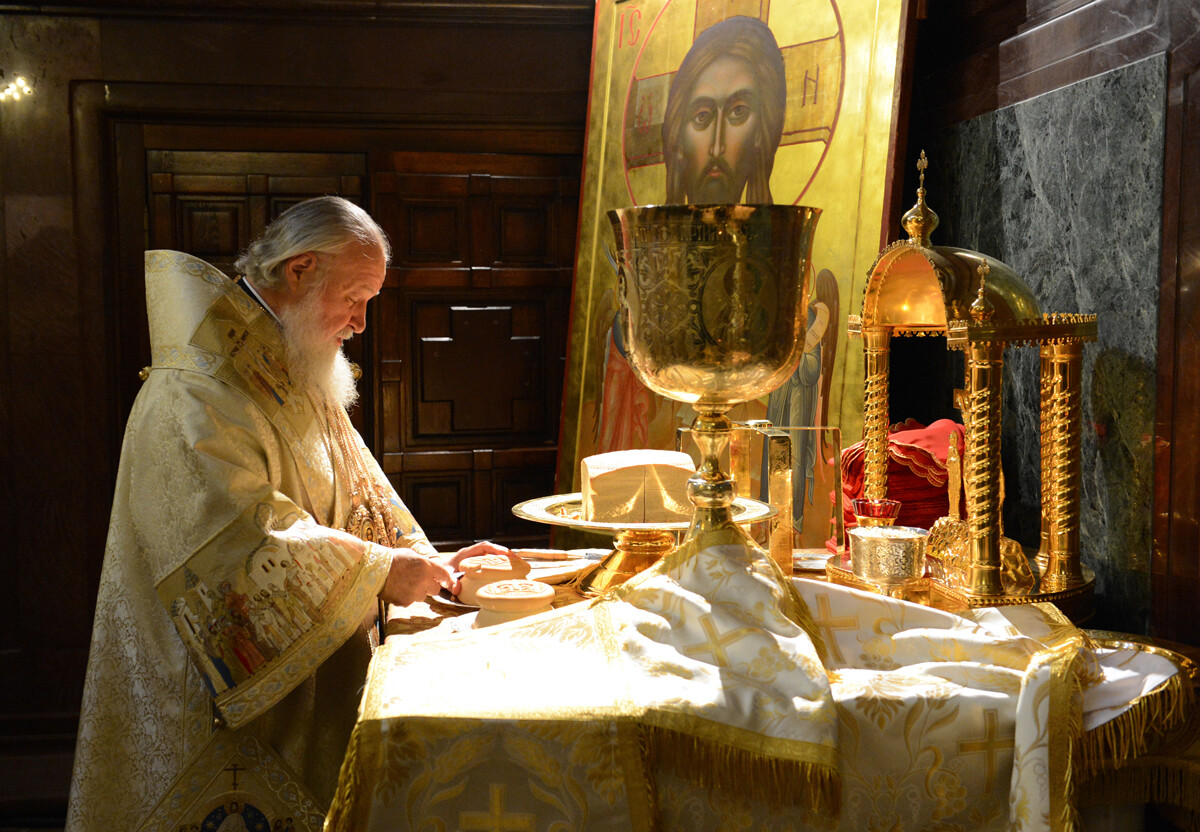
Patriarch Kirill during the liturgy at Christ the Savior Cathedral
Sergei Pyatakov/SputnikNext to the altar table stands a smaller table, where the bread in the form of communion wafer and the wine are prepared in a special way for the liturgy.

A seven-branched candlestick in the Church of the Purification of the Lord in Kaliningrad
Igor Zarembo/SputnikThis is a special candelabrum on a tall stand for seven candles, usually placed in the sanctuary near the altar table.
Against the wall of the semicircular recess of the sanctuary is a special place occupied by the bishop's throne. The honorary bishop sits here during the divine liturgy.
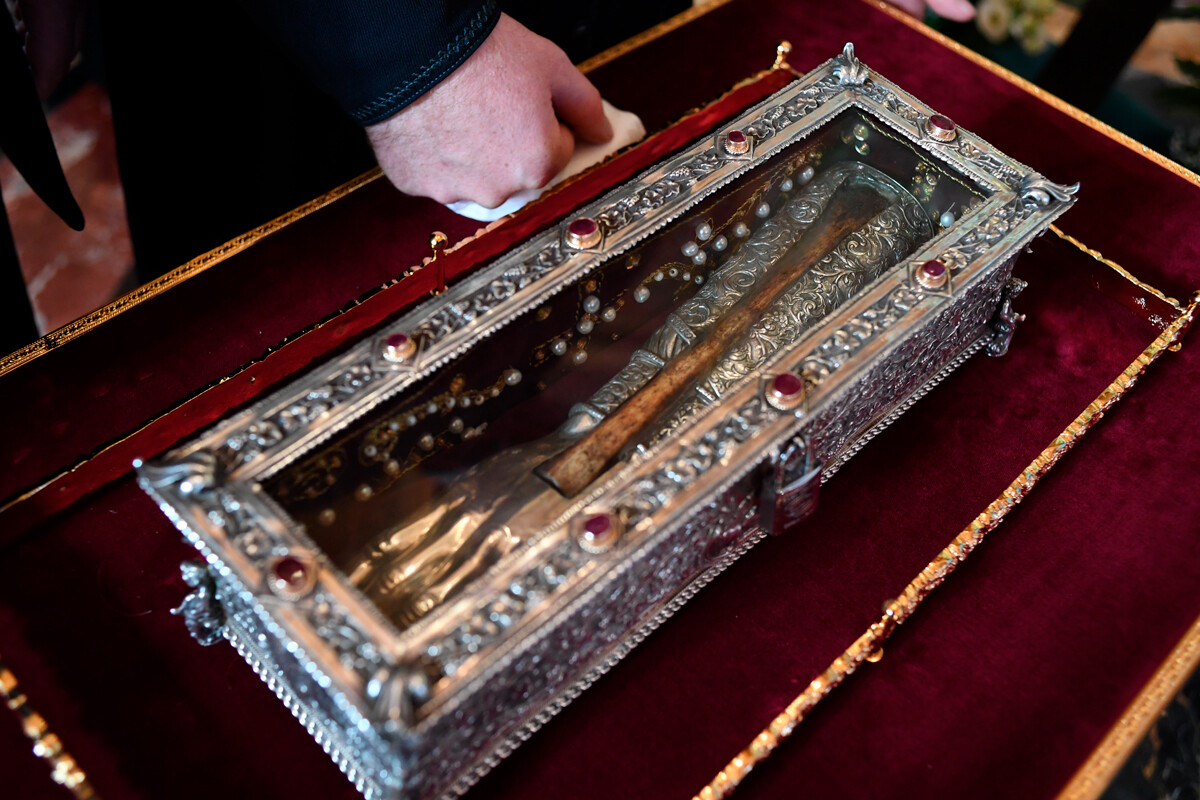
A reliquary containing the relics of St. Spiridon of Triumph brought to Russia from the Greek island of Corfu
Sergei Pyatakov/SputnikMiracle-working relics of saints can also frequently be found in a church. They can be placed in large and richly-decorated tomb-like shrines, or small caskets or larger reliquary chests (particularly if they are fragments of saints' relics or clothing).
Dear readers,
Our website and social media accounts are under threat of being restricted or banned, due to the current circumstances. So, to keep up with our latest content, simply do the following:
If using any of Russia Beyond's content, partly or in full, always provide an active hyperlink to the original material.
Subscribe
to our newsletter!
Get the week's best stories straight to your inbox